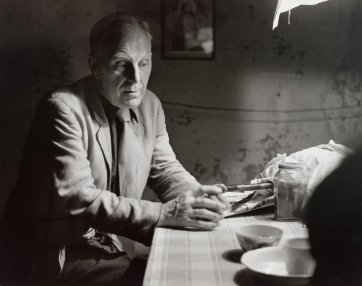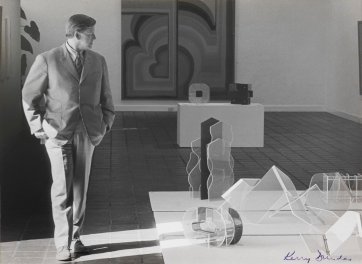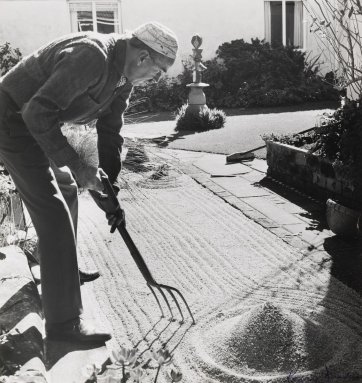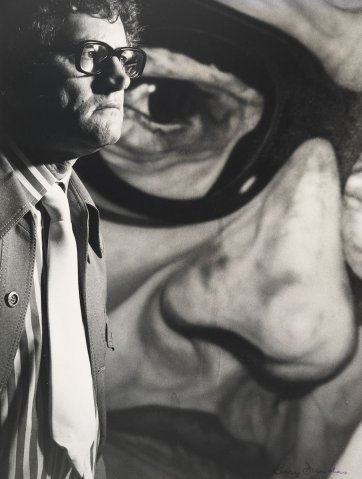John Passmore (1904-1984), painter, studied with Julian Ashton in Sydney between the ages of fourteen and twenty-nine, and took some instruction from George Lambert. Between 1933 and 1950 he eked out an existence overseas. On his return to Australia he continued to seek his personal idiom, evolving from Cezanne-like forms and use of colour to his own palette, characteristic motifs, and interpretation of his Sydney surroundings. He won the Helena Rubinstein Travelling Scholarship in 1959. Alongside his 'difficult' paintings, over the course of his career Passmore produced a series of drawings that critic Alan McCulloch describes as 'among the most remarkable series of graphic documents produced by any of his generation of Australian painters.' John McDonald claims Passmore is an artist as much identified with Sydney as Brett Whiteley. A model for the artist protagonist in Patrick White's The Vivisector, Passmore spent his last weeks in a Redfern home for destitute old men. A major retrospective of his work was held at the Art Gallery of New South Wales in 1984, and he was one of the twenty artists - including Dobell, Drysdale, Nolan, Fairweather and Rees - featured in the Gallery's 2000 exhibition Australian Icons (an 'opportunity to polish the family silver', as Barry Pearce put it). The John Passmore Museum, with a rotating display of the 270 works the artist bequeathed to his friend, art collector Elinor Wrobel, opened in a heritage-listed building in Woolloomooloo in 2003.
Collection: National Portrait Gallery
Purchased 2010
The National Portrait Gallery respects the artistic and intellectual property rights of others. Works of art from the collection are reproduced as per the
Australian Copyright Act 1968 (Cth). The use of images of works from the collection may be restricted under the Act. Requests for a reproduction of a work of art can be made through a
Reproduction request. For further information please contact
NPG Copyright.

















